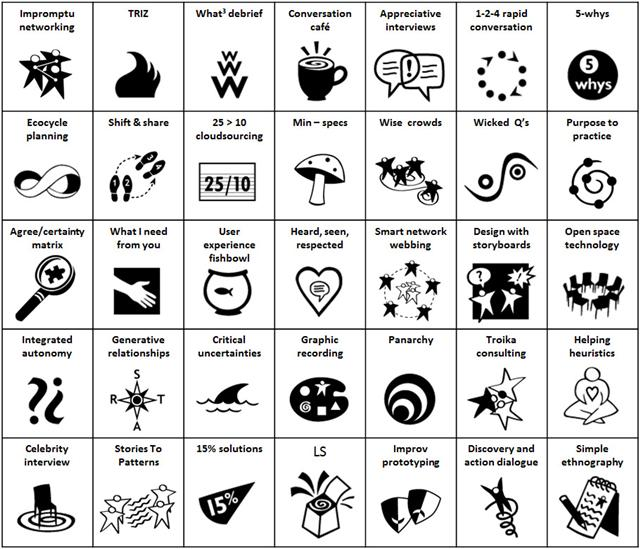What are Liberating Structures
One of the roles I often take on when providing business consultancy for a larger organisation is that of a Scrum Master Trainer. I’ve spoken before about what this - somewhat confusing! - title actually means, but today I wanted to focus on the role Liberating Structures play in my approach to fostering collaboration and creativity across a team.
Note: if Scrum isn’t a term you’re familiar with, this article might not be for you! But don’t worry, I offer bespoke solutions for all of my clients, and will tailor my coaching and consultancy to suit your needs and experience. So if these words and phrases sound like a foreign language to you, don’t stress! We can chat about how I can support you in whatever terminology best suits you and your business.
Right, let’s get back to it! Liberating Structures are a collection of 33 facilitation techniques designed to create a more inclusive and engaging environment for everyone involved.
You can learn more about the 33 facilitation techniques and what each one means here.
There are many benefits to applying these approaches to team management and organisation.
By integrating Liberating Structures into my clients’ processes, their teams have experienced:
Improved collaboration and communication
Increased engagement and ownership
Enhanced adaptability and innovation.
Liberating Structures can be effectively incorporated into various aspects of Scrum. Some examples include:
Sprint Planning - Try "1-2-4-All" to brainstorm and prioritise Product Backlog Items, ensuring everyone's input is heard.
Daily Scrum - Try "Impromptu Networking" to create quick connections and updates between team members.
Sprint Retrospectives - Try "TRIZ" 🔍 to identify potential obstacles and develop strategies to overcome them, fostering continuous improvement.
To try out Liberating Structures in your Scrum Team, consider these tips:
Start small and experiment with different structures.
Be patient and allow for a learning curve as your team adapts.
Encourage active participation and listen to everyone's input.
Liberating Structures are designed to distribute content and participation. By involving all team members in discussions and decision-making, we're able to tap into the collective intelligence of the group and uncover hidden insights. They can be a very powerful tool for fostering a diverse, inclusive collaboration environment.
If Liberating Structures sound interesting to you, I’d be delighted to speak with you about how you can incorporate these techniques into your ways of working. If you'd like to learn more or have any questions, book in for a free 30-minute kick off conversation, and let’s chat!



